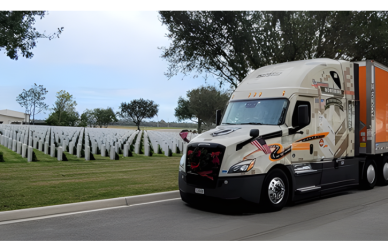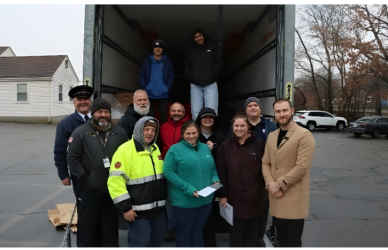Sitting in bumper-to-bumper traffic is no fun for anyone, but for truck drivers, it’s more than just an inconvenience—it’s wasted time, lost revenue, and added stress. Knowing which highways to watch out for and planning ahead can make all the difference in keeping your schedule intact.
Let’s take a closer look at three of the busiest highways in America for truckers and explore practical ways to beat the gridlock.
Interstate 95 (I-95): The East Coast Gauntlet
Stretch: Covering nearly 2,000 miles from Miami, Florida, to Houlton, Maine, I-95 is the lifeline of the East Coast. Truckers passing through urban areas like Washington, D.C., Philadelphia, and New York City encounter some of the worst traffic in the country.
Why it’s a headache for truckers:
Major metro bottlenecks.
Frequent construction zones and lane closures.
A high volume of passenger vehicles, especially during summer and holiday seasons.
How to avoid the chaos:
Choose alternate routes: Truckers traveling through the Southeast can use U.S. 17 or U.S. 301 to bypass traffic-heavy sections. In the Northeast, consider state highways like the Garden State Parkway (trucks allowed on certain stretches).
Drive during off-peak hours: Early mornings (before 6 a.m.) and late evenings (after 8 p.m.) are your best bets.
Plan around tolls: While some toll roads like the New Jersey Turnpike are quicker, consider whether the time savings are worth the added cost.
Interstate 405 (I-405): The LA Crawl
Stretch: Circling Los Angeles, I-405 serves as a major artery for Southern California. Despite its 73-mile length, it’s infamous for gridlock at virtually all hours.
Why it’s tough on truckers:
High traffic volumes near LAX and major suburbs.
Limited truck-friendly detours.
Extended rush hours that seem to last all day.
How to make it manageable:
Try alternate routes: If your route allows, I-710 or I-5 can provide relief for north-south travel. For east-west movement, consider SR-91 or SR-134.
Schedule early morning or late-night runs: The best window is from 4-6 a.m., as traffic builds quickly after sunrise.
Avoid Fridays: Fridays tend to see the heaviest traffic as commuters and travelers head out for the weekend.
Interstate 10 (I-10): Houston’s Katy Freeway
Stretch: Stretching from Santa Monica, California, to Jacksonville, Florida, I-10 is one of the longest interstates in the country. However, the section passing through Houston is particularly brutal for truckers. Known as the Katy Freeway, this stretch expands to 26 lanes in some areas, yet it’s often a parking lot during rush hours.
Why truckers dread it:
Commuter traffic floods the highway during mornings and evenings.
Frequent lane closures and construction zones.
Severe weather like thunderstorms can cause sudden slowdowns.
Tips to avoid delays:
Take the Hardy Toll Road: Although it’s a toll route, this road bypasses much of I-10’s congestion, saving you time and frustration.
Plan around rush hour: Houston traffic peaks between 7-9 a.m. and 4-6 p.m. Aim to travel mid-morning or late evening.
Monitor weather reports: Apps like Weather Channel or Waze can help you anticipate rain and reroute if needed.
Extra Tips for Truckers to Beat Gridlock
No matter where you’re driving, these universal strategies can help you stay ahead of the traffic:
Use real-time traffic apps: Tools like Google Maps, Trucker Path, and Waze provide updates on traffic patterns, construction zones, and accidents.
Keep a CB radio handy: Fellow truckers are often the best source of real-time road conditions. Tune in and share updates on your route.
Avoid rush hour altogether: If possible, schedule your driving outside peak times in major cities. Overnight hauls can help you stay productive while avoiding the worst congestion.
Truckers are the backbone of America’s economy, and your time is valuable. While highways like I-95, I-405, and I-10 present daily challenges, proper planning and alternate route strategies can help you keep moving.
Next time you find yourself approaching a notorious stretch of road, remember these tips to avoid the worst of the gridlock—and keep your haul on track. Safe travels!











